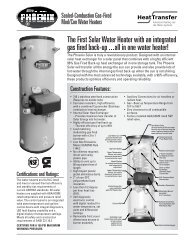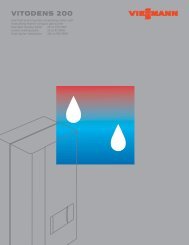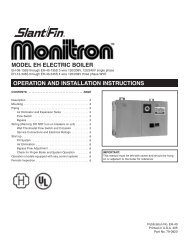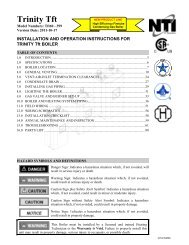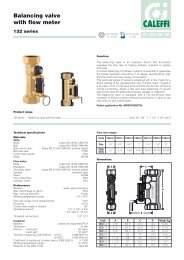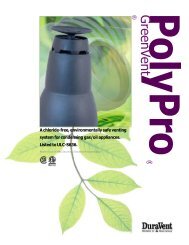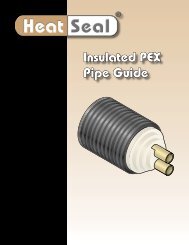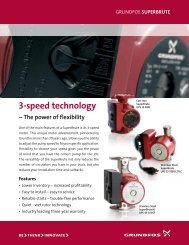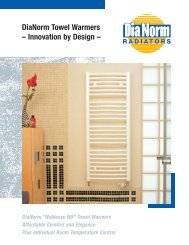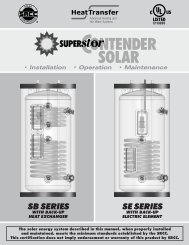Apricus Solar Water Heating System Installation and Operation ...
Apricus Solar Water Heating System Installation and Operation ...
Apricus Solar Water Heating System Installation and Operation ...
Create successful ePaper yourself
Turn your PDF publications into a flip-book with our unique Google optimized e-Paper software.
<strong>Apricus</strong> <strong>Solar</strong> Collector <strong>Installation</strong> & <strong>Operation</strong> Manual - USAWARNINGThe following maintenance may ONLY be completed by Authorized PersonS11.3. Broken Tubea) If a tube breaks, it should be replaced, as soon as possible to maintain maximum collector performance.b) The system will still operate normally <strong>and</strong> safely even with a tube broken.c) Always wear safety goggles <strong>and</strong> gloves when h<strong>and</strong>ling broken glass. Any broken glass should be clearedaway to prevent injury.d) To replace a tube:i) Remove the tube clip(s), slide broken tube out <strong>and</strong> carefully pick up any glass pieces. Protectivegloves <strong>and</strong> safety glasses must be worn when h<strong>and</strong>ling broken glass.ii) Avoid touching the glass wool insulation with bare h<strong>and</strong>s, as it can cause mild skin irritation. Weargloves.iii) If the heat pipe is not easily removed (commonly the case), it can be left in place <strong>and</strong> a newevacuated tube inserted, guiding the heat pipe down the groove between the evacuated tube inner wall<strong>and</strong> heat transfer fin. If the heat pipe is easily removed, the easiest option is to replace the heat pipe<strong>and</strong> evacuated completely.11.4. Insulationa) The pipes running to <strong>and</strong> from the collector should be completely insulated. Insulation should be checkedperiodically (at least once every 3 years) for damage or gaps, especially exterior EPDM foam insulation.b) For any insulation that is exposed exterior conditions, (sunlight <strong>and</strong> water), ensure protective cover/wrap/foil is in good condition, replacing as required.11.5. Heat Transfer Fluida) Heat transfer fluids that are exposed to stagnation temperature may break down over time, which willcause the fluid to become acidic <strong>and</strong> loose anti-freeze properties. It will general become “sludgy,” which canreduce circulation efficiency. This is particularly the case for GRAS propylene glycols, but will also occurwith “high-temp” rated glycols, such as DowFrost HD. Refer to 3.31 for more information on heat transferfluids or consult the manufacturer of the fluid.b) Ideally, heat transfer fluid should be inspected <strong>and</strong> tested annually, but least once every 3 years. Thefollowing checks should be completed:i) Check for cloudiness or sludging that would indicate indicate fluid breakdownii) Check pH, should be within the range specified by the manufactureriii) Use hydrometer to check freeze protection level11.6. Draining the Collectora) During system maintenance or in preparation for extremely <strong>and</strong>/or extended cold conditions, draining thecollector manifold may be required. If the building is going to be vacant for longer than 45 days at a time,the system must be drained <strong>and</strong> the collectors covered with a tarp. Refer to sections 7.10 <strong>and</strong> 8.9 forspecific instruction on draining.11.7. Other Componentsa) Other parts of the system such as the storage tank <strong>and</strong> the electric, gas or tankless water heater or boilershould be serviced <strong>and</strong> inspected according to their specific manufacturer’s maintenance guidelines.Copyright 2011 – <strong>Apricus</strong> Inc Doc: A7-05.4.1.4-PB-1.9 Page 82 of 126



